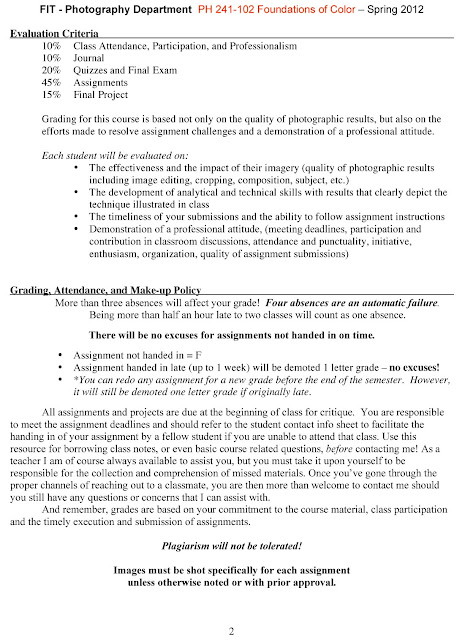Assigned: Week #1 2/1/11
Due Date: Week #2 2/8/11
Images Due: 4 Digital Images
Details: Set your digital camera to Auto White Balance, Raw image capture,
and a color profile of Adobe RGB
The purpose of this assignment is to stimulate your color awareness. You are to simply explore the colorful world around you with your digital camera. Find inspiring photos that incorporate your assigned color while depicting appealing compositions and subjects. You may create the environment, or find it in “nature”, but you must document your assigned color!
You can be literal or figurative with the photographs, but they must document your assigned color. For a range of concepts, consider the following suggestions to get you started:
- Capture your color dominating the frame
- Capture your color as a small, but important, part of the image
- Capture your color along with its complimentary color
- Capture your color along with its neighboring colors
- Capture your color highly saturated, or very dull
Due for critique at the beginning of next class are 4 RAW images you’ve selected through editing and that you feel are your strongest.
Be creative and have fun!
Your Assigned Color: ______________________________________















